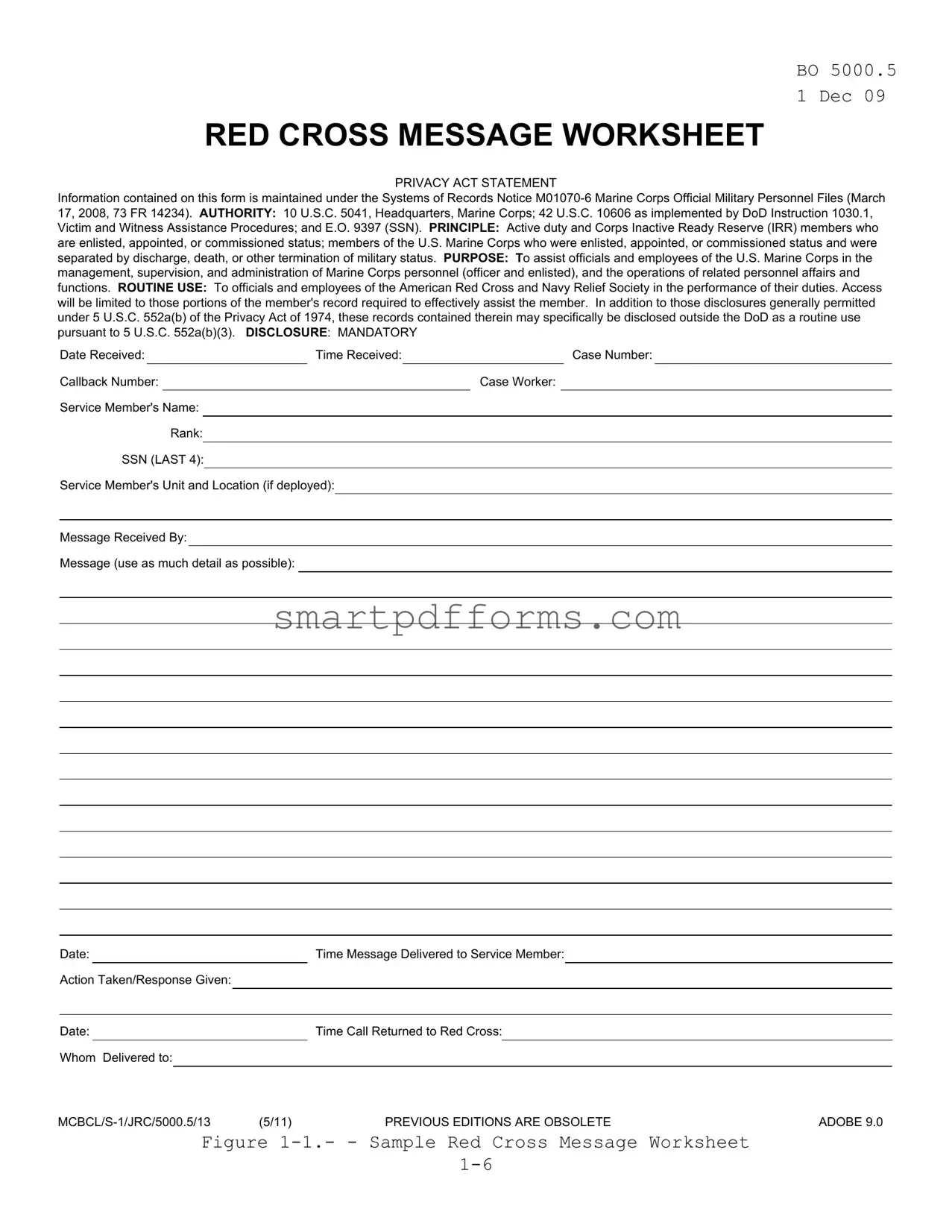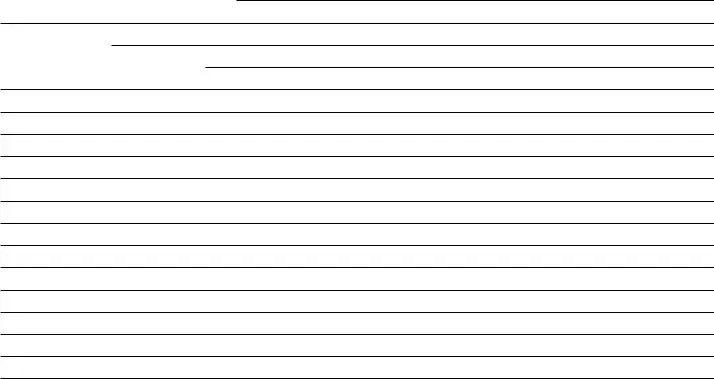BO 5000.5
1 Dec 09
RED CROSS MESSAGE WORKSHEET
PRIVACY ACT STATEMENT
Information contained on this form is maintained under the Systems of Records Notice M01070-6 Marine Corps Official Military Personnel Files (March 17, 2008, 73 FR 14234). AUTHORITY: 10 U.S.C. 5041, Headquarters, Marine Corps; 42 U.S.C. 10606 as implemented by DoD Instruction 1030.1, Victim and Witness Assistance Procedures; and E.O. 9397 (SSN). PRINCIPLE: Active duty and Corps Inactive Ready Reserve (IRR) members who are enlisted, appointed, or commissioned status; members of the U.S. Marine Corps who were enlisted, appointed, or commissioned status and were separated by discharge, death, or other termination of military status. PURPOSE: To assist officials and employees of the U.S. Marine Corps in the management, supervision, and administration of Marine Corps personnel (officer and enlisted), and the operations of related personnel affairs and functions. ROUTINE USE: To officials and employees of the American Red Cross and Navy Relief Society in the performance of their duties. Access will be limited to those portions of the member's record required to effectively assist the member. In addition to those disclosures generally permitted under 5 U.S.C. 552a(b) of the Privacy Act of 1974, these records contained therein may specifically be disclosed outside the DoD as a routine use pursuant to 5 U.S.C. 552a(b)(3). DISCLOSURE: MANDATORY
Date Received: |
|
Time Received: |
|
|
|
Case Number: |
|
Callback Number: |
|
|
|
Case Worker: |
|
Service Member's Name: |
|
|
|
|
|
|
|
|
|
Rank: |
|
|
|
|
|
|
SSN (LAST 4): |
|
|
|
|
|
|
|
|
|
|
|
|
|
|
|
|
Service Member's Unit and Location (if deployed):
Message Received By:
Message (use as much detail as possible):
|
Date: |
|
|
Time Message Delivered to Service Member: |
|
|
|
Action Taken/Response Given: |
|
|
|
|
|
|
|
|
|
|
|
Date: |
|
|
Time Call Returned to Red Cross: |
|
|
|
|
|
|
|
|
|
|
|
Whom Delivered to: |
|
|
|
|
|
|
MCBCL/S-1/JRC/5000.5/13 |
(5/11) |
PREVIOUS EDITIONS ARE OBSOLETE |
ADOBE 9.0 |
Figure 1-1.- - Sample Red Cross Message Worksheet
1-6

